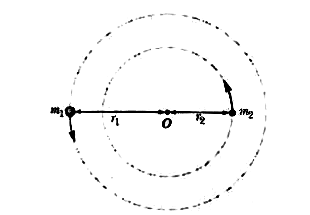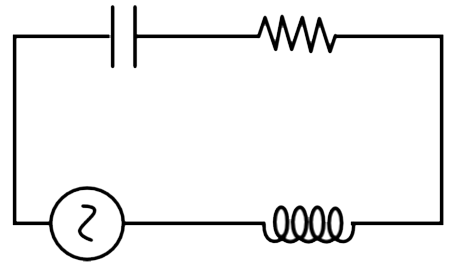Hunting a black hole. Observations of the light from a certain star indicate that it is part of a binary (two-star) system. This visible star has orbital speed y = 270 km/s, orbital period T = 1.70 days, and approximate mass m1=6Ms where Ms is the Sun's mass, 1.99×1030kg. Assume that the visible star and its companion star, which is dark and unseen, are both in circular orbits . What integer multiple of M gives the approximate mass m2 of the dark star?

m2/Ms≈9
Topper's Solved these Questions
- BOOK - RESNICK AND HALLIDAYCHAPTER - GRAVITATIONEXERCISE - PRACTICE QUESTIONS (SINGLE CORRECT CHOICE TYPE)16videos
GRAVITATION
- BOOK - RESNICK AND HALLIDAYCHAPTER - GRAVITATIONEXERCISE - PRACTICE QUESTIONS (MORE THAN ONE CORRECT CHOICE TYPE)7videos
GRAVITATION
- BOOK - RESNICK AND HALLIDAYCHAPTER - GRAVITATIONEXERCISE - CHECKPOINT5videos
GRAVITATION
- BOOK - RESNICK AND HALLIDAYCHAPTER - GEOMETRICAL OPTICS : REFRACTIONEXERCISE - Practice questions(Integers)4videos
GEOMETRICAL OPTICS : REFRACTION
- BOOK - RESNICK AND HALLIDAYCHAPTER - HEAT-MEASUREMENT AND TRANSFEREXERCISE - PRACTICE QUESTIONS( INTEGER TYPE)5videos
HEAT-MEASUREMENT AND TRANSFER
Similar Questions
Knowledge Check
- Question 1 - Select One
The Stars are not visible during the day because
AOf their self-illuminationBStars are far away from the earthCSunlight is very brightDTheir size is large - Question 2 - Select One
In a binary star system one star has thrice the mass of other. The stars rotate about their common centre of mass then :
ABoth stars have same angular momentum about common centre of massBBoth stars have angular momentum of same magnitude about common centre of massCBoth stars have same angular speedsDBoth stars have same linear speeds - Question 3 - Select One
Stars are not visible in the day time because
AStars hide behind the sunBStars do not reflect sun rays during dayCStars vanish during the dayDAtmosphere scatters sunlight into a blanket of extreme brightness through which faint stars cannot be visible
A binary star consists of two stars A(mass2.2Ms) and B (mass11Ms) where Ms is the mass of the sun, they are separted by distane d and are rotating about their center of mass, which is stationary. The ratio of the total angular momentum of the binary to the angular momentum of star B about the centre of mass is
View SolutionA binary star consists of two stars A(mass2.2Ms) and B (mass11Ms) where Ms is the mass of the sun, they are separted by distane d and are rotating about their center of mass, which is stationary. The ratio of the total angular momentum of the binary to the angular momentum of star B about the centre of mass is
View SolutionDistance between two stars of masses 3MS and 6MS is 9R.R is the mean distance between Earth and Sun and MS is mass of Sun. Two stars orbit around their common center of mass in circular orbits with period nT. Value of n is
View SolutionA binary star system consists of two stars A and B which have time period TAandTB,radiusRBa and mass MaandMB. Then
View SolutionA star of mass M (equal to the solar mass) with a planet (much smaller than the star) revolves around the star in a circular orbit. The velocity of the star with respect to the center of mass of the star-planet system is shown below :
 View Solution
View Solution

